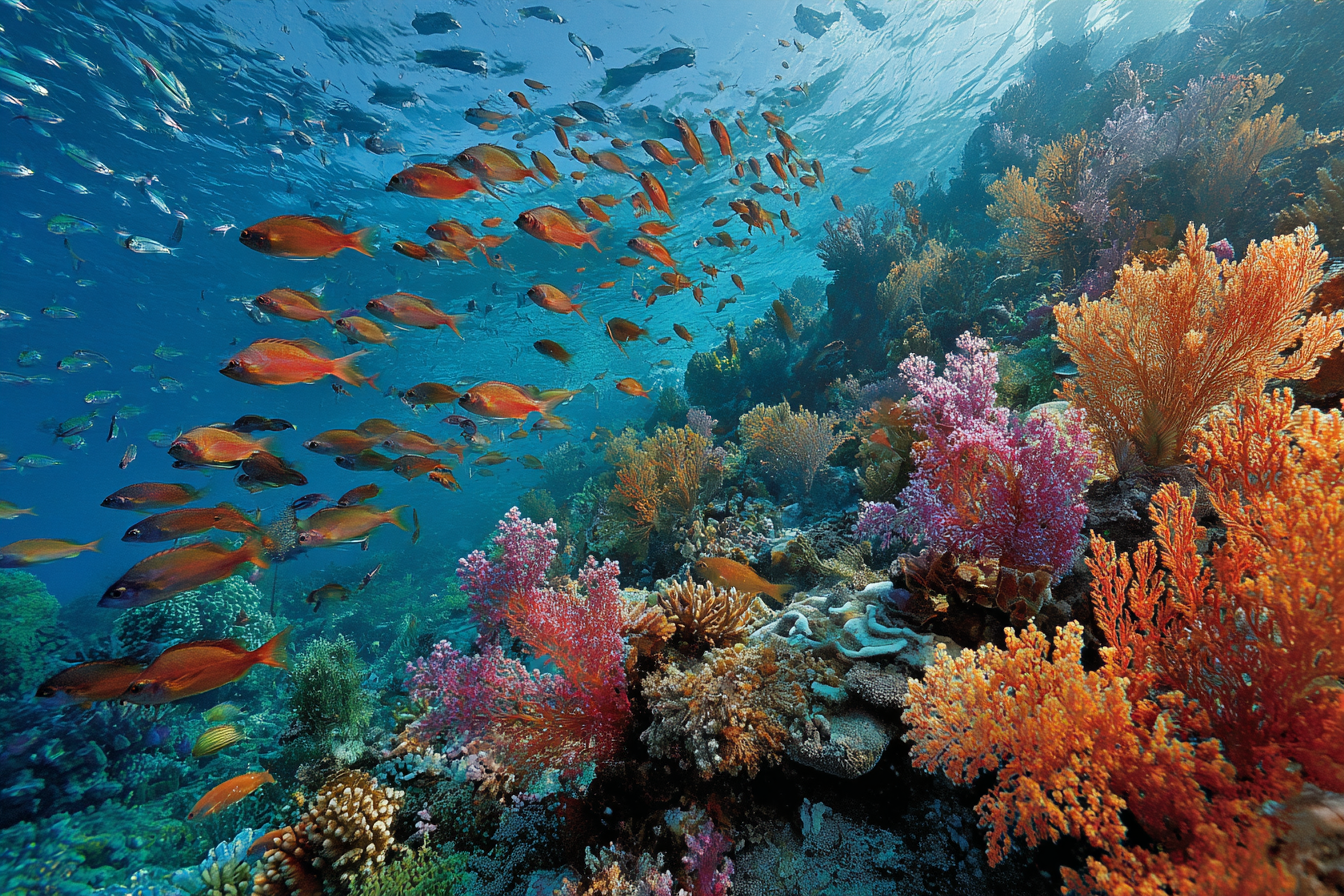Nestled along the southeast coast of Cebu in the Philippines, the Oslob Marine Sanctuary is a shining example of marine conservation and eco-tourism working hand in hand. This vibrant sanctuary attracts nature lovers, divers, and snorkelers from around the world who come eager to witness the rich aquatic biodiversity it shelters. Beyond just a tourist destination, it plays a critical role in protecting and nurturing marine life, ensuring that these underwater ecosystems thrive for generations to come. In this article, we explore the special features of the Oslob Marine Sanctuary, its importance in marine conservation, various visitor activities, and how travelers can experience this spectacular underwater world responsibly.
Introduction to the Oslob Marine Sanctuary
The Oslob Marine Sanctuary was officially designated to conserve and protect the local marine ecosystem surrounding the small coastal town of Oslob. Known for its clear waters and rich biodiversity, the sanctuary spans several hectares of coral reefs and seagrass beds that form the natural habitat for an array of marine species. The waters off Oslob have gained international fame primarily for whale shark watching, but the sanctuary extends far beyond that to protect a diverse community of marine creatures. Thanks to strong community involvement and sustainable tourism practices, the sanctuary has become a beacon of hope for marine conservation efforts in the region.
Description of Marine Species and Coral Reefs
The marine sanctuary is home to a stunning palette of aquatic life that reflects the vibrancy of tropical underwater ecosystems. The star attraction is undoubtedly the whale sharks (locally called “butanding”), the gentle giants of these waters that draw visitors year-round. Aside from these magnificent creatures, the sanctuary shelters diverse species including:
- Colorful reef fish such as angelfish, clownfish, and butterflyfish
- Hard and soft corals that form intricate reef structures
- Sea turtles, which occasionally glide gracefully through the waters
- Various species of crabs, sea cucumbers, and starfish
- Small sharks and rays hiding among the coral formations
The coral reefs themselves are crucial to the marine habitat. They act as nurseries for many species and provide shelter and feeding grounds. The health of these reefs is closely monitored, and efforts are made to minimize human impact to ensure these delicate ecosystems remain vibrant and resilient.
Importance of the Sanctuary for Conservation
The Oslob Marine Sanctuary is not just a tourist hotspot; it is a vital area for conserving marine biodiversity that faces many threats worldwide, such as overfishing, habitat destruction, and pollution. Creating the sanctuary has helped protect these waters from destructive fishing practices and unregulated tourism activities. It also serves as a natural laboratory where scientists can study marine life and the effectiveness of conservation methods. The local community has embraced its role as stewards of the sanctuary, understanding that preserving the marine ecosystem is essential for sustaining their livelihoods, especially those relying on fishing and tourism.
Conservation here is about balancing human activity with nature’s needs. The sanctuary also educates visitors and locals alike on marine protection’s significance, encouraging practices that promote sustainability and respect for wildlife. Its success has inspired similar conservation initiatives in other parts of the Philippines and beyond.
Snorkeling and Diving Opportunities
One of the best ways to explore the Oslob Marine Sanctuary is through snorkeling and diving, activities that offer unparalleled views of the vibrant marine life beneath the surface. Snorkelers can easily observe marine species and the spectacular coral gardens just meters from the shore, while scuba divers have the chance to explore deeper reef areas teeming with life. The waters here are generally calm and clear, especially during the dry season from December to May, which makes for excellent visibility.
A popular dive site known as the “Coral Garden” features colorful corals and abundant fish species, perfect for underwater photography and nature observation. For those new to diving, certified instructors offer training and guided tours to help visitors enjoy the underwater world safely and responsibly. Moreover, the whale shark interactions, conducted under strict guidelines, provide a unique opportunity to swim alongside these gentle giants, a memorable experience for many.
Rules and Regulations to Protect the Sanctuary
To ensure the sanctuary remains a safe haven for marine life, a set of clear rules and regulations govern visitor activities. These guidelines are strictly enforced to minimize stress and harm to the animals and the ecosystem. Some key regulations include:
- No touching or riding the whale sharks or any marine creatures to prevent injury and disturbance
- Maintaining a safe distance from the whale sharks, typically at least 4 meters away
- No use of sunscreen or lotions that could damage corals (biodegradable options are recommended and often required)
- Prohibition of littering or dumping any waste in the water or surrounding areas
- Limiting the number of swimmers in the water at any given time to avoid overcrowding
- Following instructions of guides and local wardens diligently
Adherence to these rules is essential for visitors to contribute positively to the sanctuary’s conservation goals. Local authorities and community officers are present to monitor and assist tourists, ensuring that all interactions are ethical and sustainable.
How Tours Operate in the Area
Tourism in the Oslob Marine Sanctuary is well-organized with several licensed operators offering whale shark watching, snorkeling, and diving tours. Most tours begin in the early morning to catch the best lighting and the active whale sharks. Visitors typically board small banca boats that ferry them to designated whale shark interaction zones and snorkeling spots within the sanctuary.
Tour guides are knowledgeable about marine life, conservation protocols, and safety practices, making the experience both educational and enjoyable. Many operators work closely with local communities and conservation organizations to ensure that tourism benefits the environment and the residents economically.
Pre-booking tours is recommended, especially during peak seasons, to ensure availability and support responsible tourism. It’s advisable to select tour companies that prioritize eco-friendly practices and contribute to conservation projects within the sanctuary.
Supporting Marine Conservation While Traveling
Travelers can play a meaningful role in supporting marine conservation efforts while visiting the Oslob Marine Sanctuary. Beyond following the sanctuary’s rules, here are some ways visitors can contribute:
- Choose eco-conscious tour operators that actively support local conservation initiatives
- Bring reusable water bottles and avoid single-use plastics to reduce pollution
- Participate in local beach clean-up activities or community conservation programs
- Educate oneself and others about marine life and the importance of protecting marine ecosystems
- Support local businesses and artisans, promoting sustainable livelihoods for the community
Being a responsible traveler means treating this underwater gem with respect and spreading awareness about its fragility and significance. In doing so, visitors help ensure that the Oslob Marine Sanctuary remains a thriving haven for marine life and a source of wonder for future generations.
Embracing the Magic of the Ocean
Exploring the Oslob Marine Sanctuary offers more than just a glimpse of spectacular marine species; it is an invitation to connect with nature in its purest form. The sanctuary embodies hope and resilience, showing how even vulnerable ecosystems can flourish when protected with care and respect. Whether you’re snorkeling alongside vibrant coral reefs, marveling at the gentle whale sharks, or learning about the critical balance of marine life, every moment spent here deepens your appreciation for the ocean’s wonders.
By visiting responsibly and supporting conservation, you become part of a collective effort to safeguard this remarkable underwater world. The Oslob Marine Sanctuary stands as a shining example of how humans and nature can coexist harmoniously, inspiring each visitor to become a steward of the seas.







